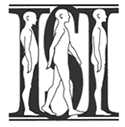|
Connective Tissue Massage (CTM) is a dynamic approach to bodywork that releases myofascial restrictions. CTM relieves chronic tension, increase ease of movement, improves posture, and enhances self-awareness. These results are often achieved with remarkable efficiency, providing immediate relief from symptoms without requiring excessive force. Because of this, CTM can benefit almost anyone, and is useful in a wide variety of circumstances ranging from accidents to illnesses to managing the stresses of daily life.
The term "connective tissue" refers to tissues that surround, protect, and support all of the other structure in the body. Connective tissue is the matrix that binds together the body's organs and systems, while at the same time providing compartmentalization between them. Fascia, a specific type of connective tissue, is a continuous sheath that provides structural support for the skeleton and soft tissues (muscles, tendons, etc.).
Gravity, injury, illness, emotional trauma, or other stresses can affect fascia, causing an imbalance in the connective tissue network. Specifically, this imbalance usually manifests as tightening and shortening of the fascia. This can be experienced as pain, stiffness, discomfort, or decreased flexibility anywhere in the body. Once myofascial tissue (i.e., muscle and its fascial envelope) becomes chronically shortened, it loses flexibility and resilience, and is unable to relax completely even when the body is at rest.
In this situation, CTM is the most direct way to restore length and flexibility to the fascia, normalizing the tissue and bringing greater health through the fascial network.
Receiving Connective Tissue Massage is a unique sensory experience, and does not involve the use of oil or lotion. The practitioner's contact is generally broad, slow, and intentional. This approach is intense but noninvasive, allowing clients to remain open to the work during the session.
Fascial shortening and restriction can be released almost instantly with the conscious touch of CTM, bringing an immediate and deep feeling of relief from tension. The sense of well-being which ensues can include more energy, increased breathing capacity, an enhanced self-awareness, and an appreciation of the body as an integrative whole, organized through its fascial matrix.
Receiving CTM in an area of chronic pain might at first cause some discomfort, as areas of tissue that have become shortened begin to be stretch and release. Any initial sensitivity usually lessens within a few minutes, as the fascial release is accomplished. Your CTM therapist knows ways to minimize any discomfort, and is careful to ensure the work feels right to you. In Connective Tissue Massage, your practitioner works with you, not on you, and he or she encourages you to give feedback so that the work can be adjusted to best meet your needs.
While CTM is primarily concerned with physical changes in the body, it can - sometimes subtly and sometimes dramatically - affect the whole person. When fascia is lengthened and more space is created physically, more space is also created for emotional change and release. As the body is released from restrictions, the emotional self is also "released," and is freed to respond more spontaneously. Physical "letting go" may coincide with a sense of emotional "letting go."
Clients describe this as a positive change, reporting diminished stress, heightened self-awareness, and greater potential for self-actualization.
Because Connective Tissue Massage is adjusted to the individual needs and comfort of each client, almost anyone can experience this work and receive its many benefits. CTM can reduce stress, relieve chronic tension, and improve flexibility and posture. Many athletes and dancers use this work to enhance their performance.
CTM can also be helpful in preventing, and rehabilitating from, many types of injuries. Connective tissue work may be useful on, or around, a specific site of injury. Because it relieves fascial strain and tension around joints, it is ideal to reduce structural compensations that could otherwise develop following trauma (whether acute or chronic). This can mean a faster and more complete recovery, as well as help to minimize the body's vulnerability to future injury.
CTM is an ideal way to help relieve the painful symptoms of any number of chronic conditions, including tendonitis, scoliosis, sciatica, TMJ, and carpal tunnel syndrome. It is a valuable adjunctive therapy for many people with chronic illnesses such as arthritis, fibromyalgia, chronic fatigue syndrome, multiple sclerosis, ALS (Lou Gehrig's Disease), or other disorders affecting the neuromusculoskeletal system.
By releasing restrictions within the myofascial network, CTM can provide relief from some of the symptoms of these and other conditions, offering clients improved range and freedom of motion, increased energy, and an enhanced sense of well being.
CTM is unique in its distinctive system of body mechanics. The practitioner is guaranteed appropriate contact with clients' fascia by leaning his or her controlled body weight in a particular alignment. Using oblique angles of contact and slow, deliberate speed allows the receiver's tissue to be easily stretched and lengthened, while the practitioner remains comfortable in his/her own body.
In contrast to some systems of fascial work, CTM never uses oil. This ensures maximum capability of affecting fascia. Likewise, the practitioner's oblique angle of contact optimizes the effectiveness of each stroke, while allowing clients to remain open and receptive to the work. This differs from myofascial approaches which stay only on superficial tissue, or which dig in a straight downward (often uncomfortable and invasive) direction.
Another distinguishing feature of CTM is its treatment of the body as a whole and integrated structure. Students learn to "feel the fascia," and are guided to recognize and address relationships among areas of the body. Experienced CTM practitioners are thus able to provide significant, lasting changes without overriding clients' boundaries of comfort and tolerance.
This, again, is in contrast to approaches which emphasize "spot work," going too fast or too deep, creating only temporary results, or leaving clients feeling disjointed.
455 Tarrymore Ave
Minneapolis, Minnesota 55419
Phone: 786-606-9744
Email: john@johnlatz.com

